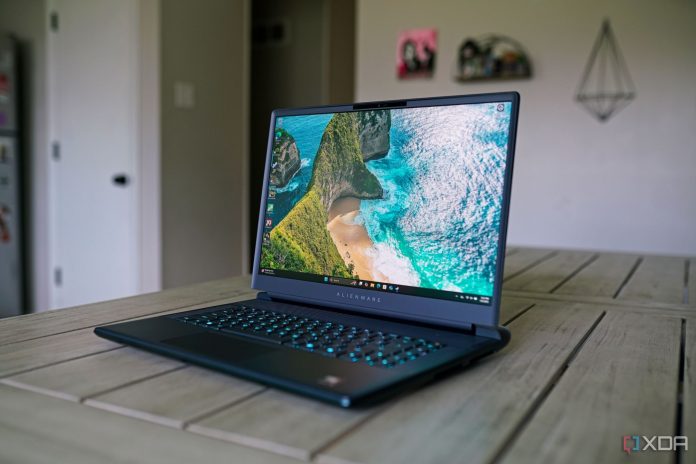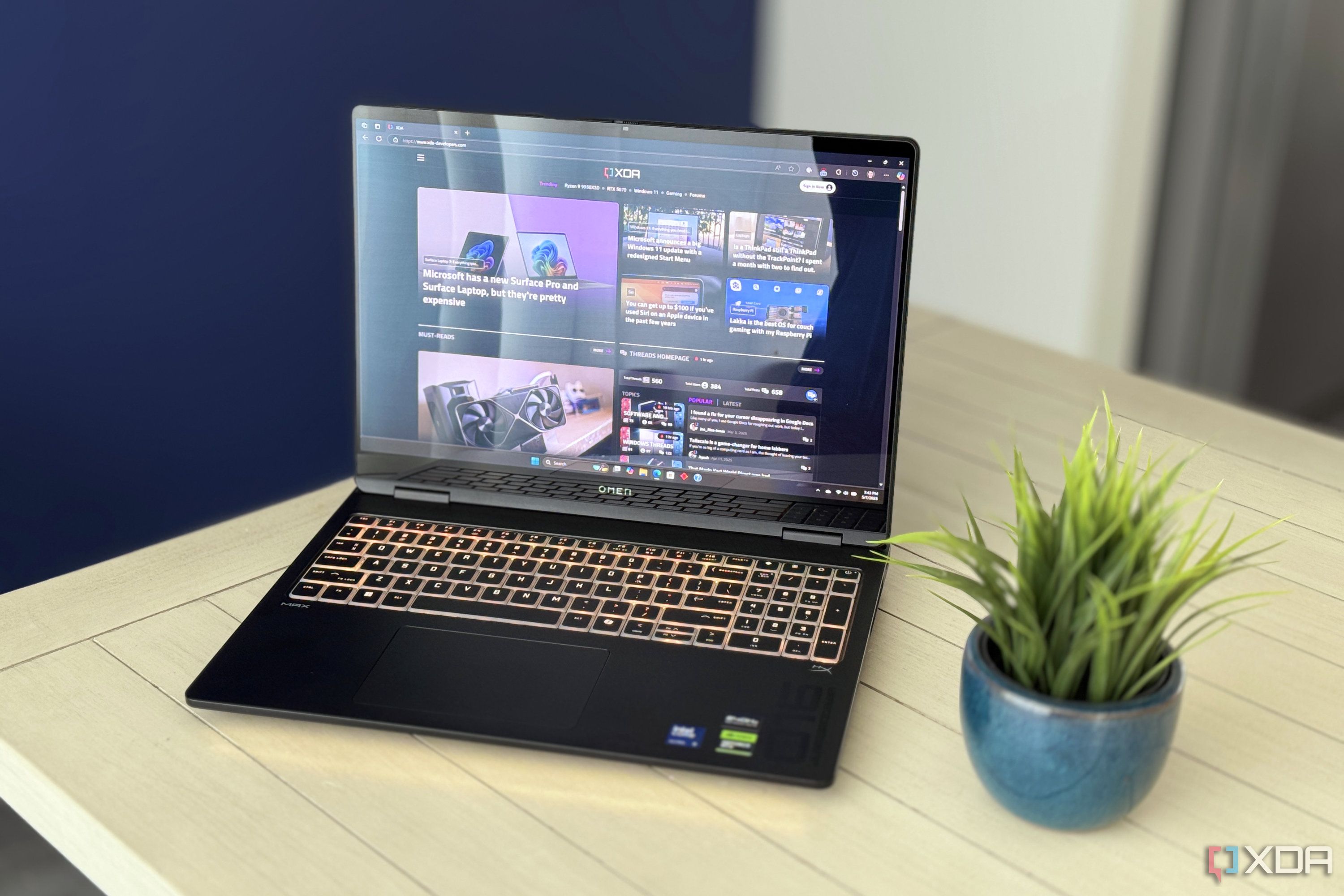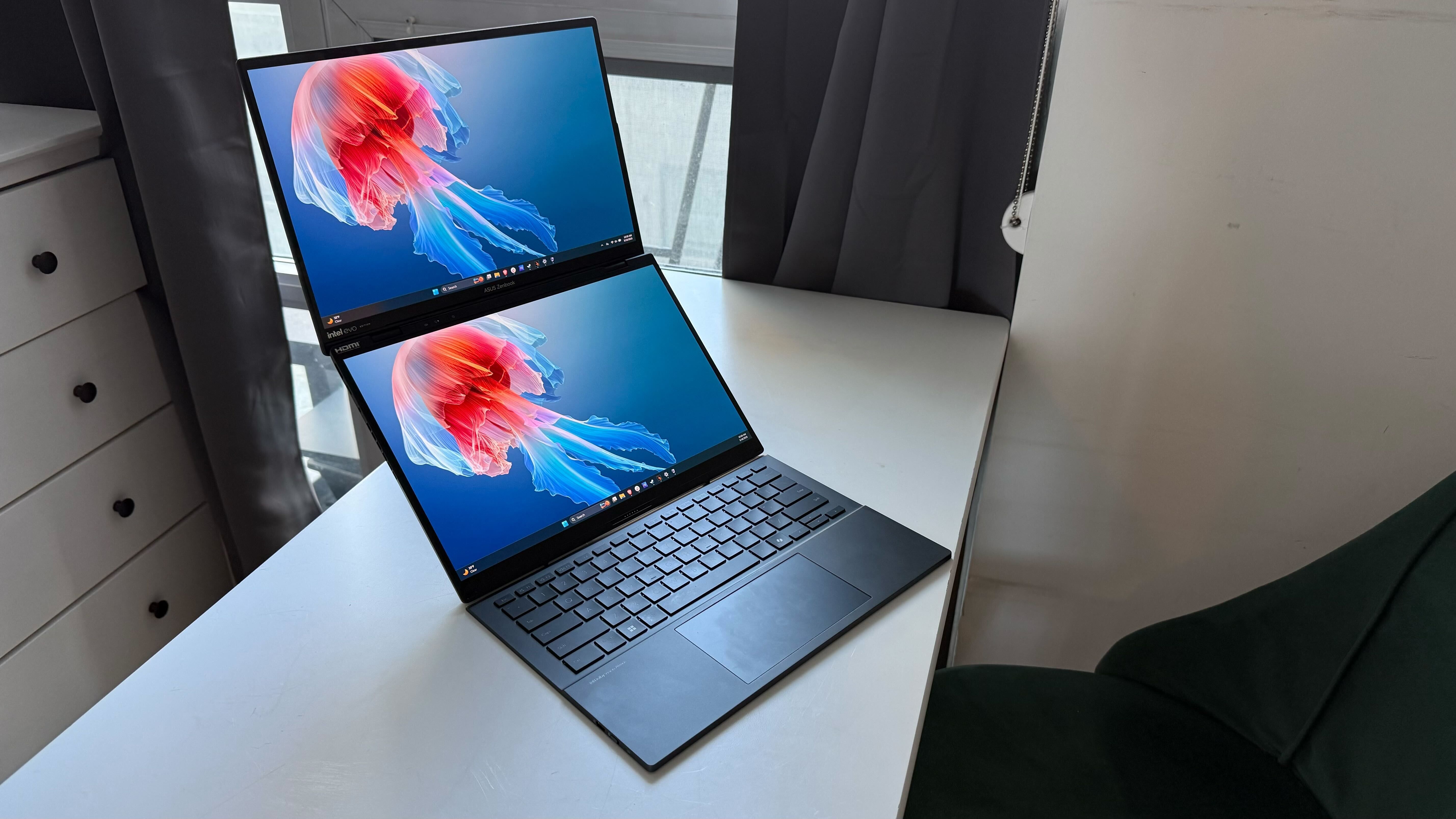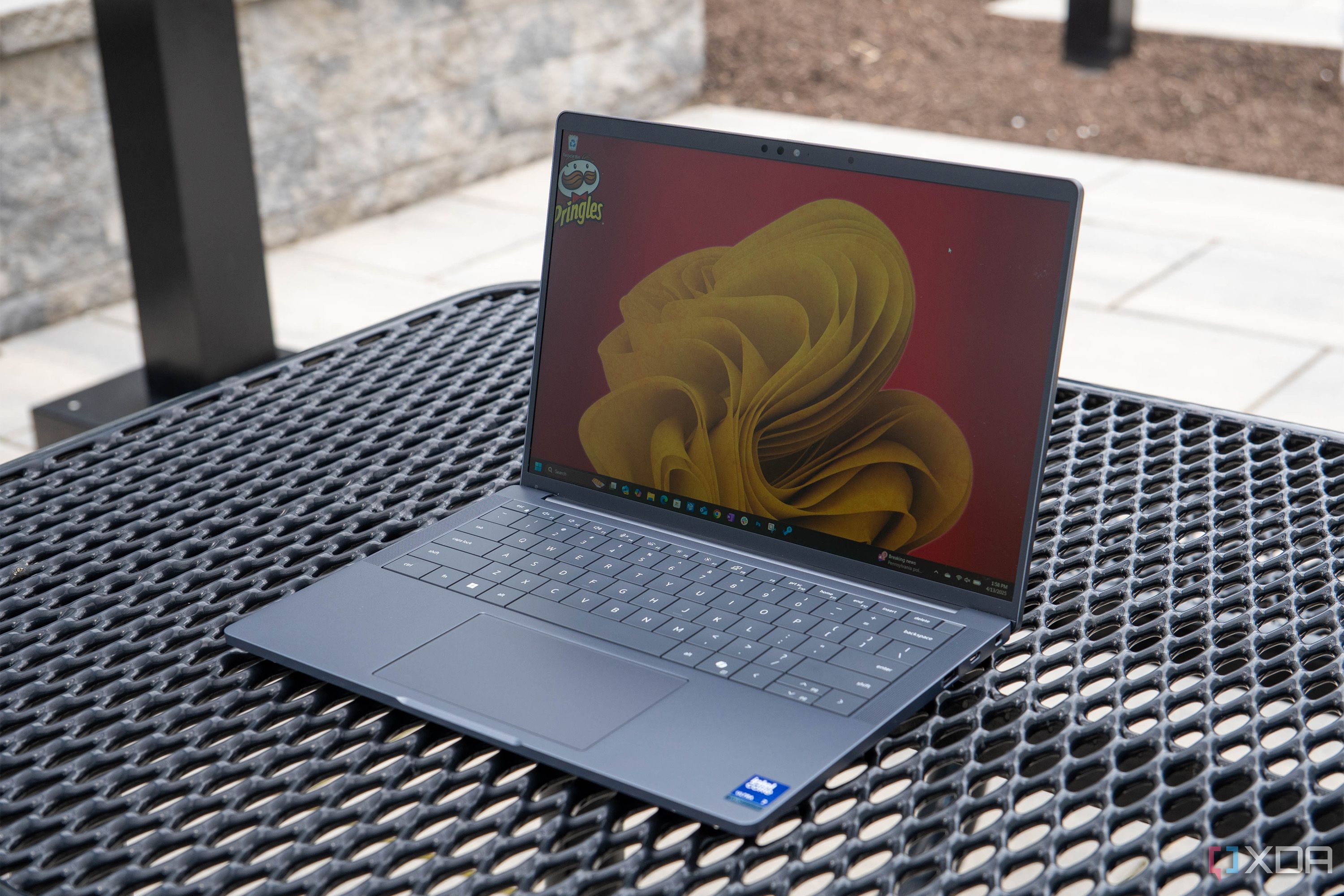
Sign in to your XDA account
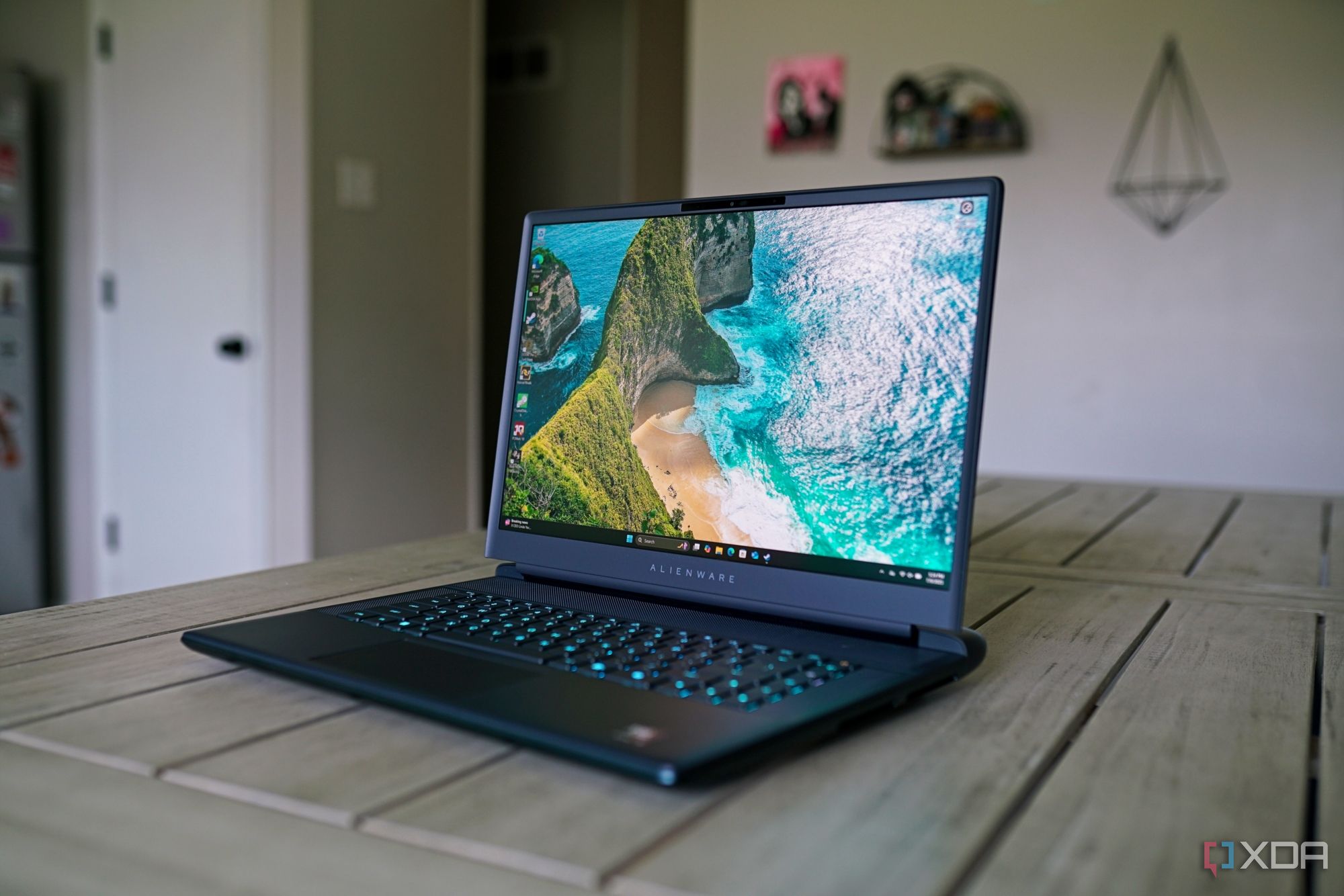
There was a period of time when gaming laptops were defined by their weirdness. They were bulky, hot, loud, and looked more like a prototype than a retail unit, but dammit; gaming laptops were trying things. Some of that has been lost in the Macbook-itification of all laptops, as devices like the Zephyrus G14 and Omen Transcend 14 push for smaller chassis, more conservative designs, and peak efficiency.
The Alienware 16 Area-51 is a return to form.
It’s weird, unique, and packed to the brim with power. You could argue that the push for smaller, more mainstream gaming laptops produces better devices overall, and I largely agree with that sentiment. But there’s something so enticing about a laptop that goes out on a limb, even if it struggles to keep its balance in some areas, and that’s exactly what the Area-51 delivers.
Alienware sent the 16 Area-51 to us for the purposes of review. It had no input on the contents of this article prior to publication.

Alienware 16 Area-51
- Operating System
- Windows 11 Home
- CPU
- Intel Core Ultra 9 275HX
- GPU
- Nvidia GeForce RTX 5080
- RAM
- 32GB DDR5-6400
The Alienware 16 Area-51 feels bold in a way few gaming laptops do these days, even if its interstellar ambition falls short in some cases.
Pros & Cons
- Wonderfully weird design
- Thunderbolt 5 ports as standard
- Reasonably priced for the hardware
- Stuck on an IPS display
- Heavier than it ought to be
Alienware 16 Area-51 pricing and availability
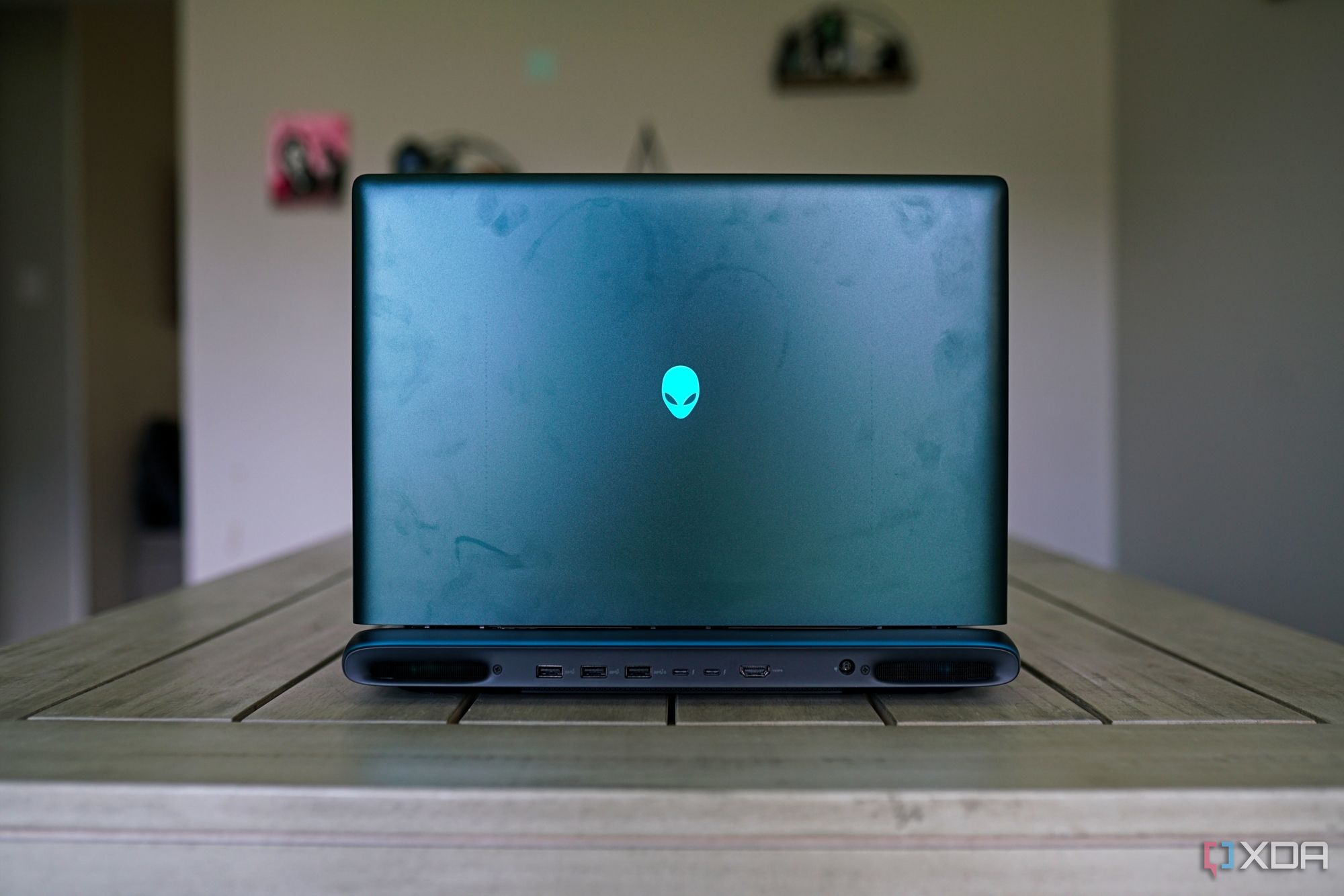
The Area-51 range is completely new, replacing the previous M-series laptops that Alienware offered. Their goal is peak performance, so expect a larger chassis and heavier weights compared to the Alienware’s Aurora range. Expect higher prices, too. The Alienware 16 Area-51 starts at $2,000, and you’ll get a Core Ultra 7 255HX, RTX 5060, 16GB of DDR5-6400, and a 1TB PCIe 4.0 NVMe SSD for that price. Tricked-out with a Core Ultra 9 275HX, RTX 5090, 64GB of memory, and 12TB of storage in RAID 0, you’ll spend $5,500 — though, close to $2,000 of that price comes from storage alone.
Alienware sent me a configuration with a Core Ultra 275HX, RTX 5080, 32GB of DDR5-6400, and a 2TB PCIe 4.0 SSD, which comes in at $3,000 based on Alienware’s online configuration tool. It’s on sale at the time of writing, and Dell has the list price set at $3,450.
Alienware 16 Area-51
- CPU
- Intel Core Ultra 9 275HX
- GPU
- Nvidia GeForce RTX 5080
- Display type
- IPS
- Display (Size, Resolution)
- 16-inch, 2,560 x 1,600, 240Hz
- RAM
- 32GB DDR5-6400
- Storage
- 2TB PCIe 4.0 NVMe SSD
- Battery
- 96WHr
- Ports
- 2x Thunderbolt 5, 3x USB Type-A 3.2 Gen 1, HDMI 2.1, SD card slot, headphone jack
- Operating System
- Windows 11 Home
- Webcam
- 1080p w/ Windows Hello
- Wi-Fi connectivity
- Wi-Fi 7
- Bluetooth
- Bluetooth 5.4
- Form factor
- Clamshell
- Dimensions
- 11.41 x 14.37 x 0.85 ~ 1.12 inches
- Weight
- 7.49 pounds
That’s a decent price, but competitors are close. The Legion Pro 7i Gen10, for instance, comes in at $3,510, while the Asus ROG Strix Scar 16 clocks in at $3,300, both with identical configurations. On sale, the 16 Area-51 is a better deal, but it’s in-line with its competitors at list price. In some cases, that’s a problem. For instance, the Legion Pro 7i comes with a 240Hz OLED display, while the 16 Area-51 uses a somewhat disappointing IPS. Still, the going rate for a laptop with these specs is between $3,000 and $3,500, and the 16 Area-51 falls right in that range.
Alienware decided to get weird
And I love it
I knew from photos of the Area-51 that Alienware was returning to previous design inspiration for the Area-51 range, opting for soft, rounded edges around the device and a dream-like colorway that defined Alienware’s original 15- and 17-inch designs. It wasn’t until the laptop showed up that I realized that the inspiration was more than skin-deep. The design on the 16 Area-51 is weird across the board, which isn’t a bad thing.
You get the RGB trackpad and per-key lighting available on previous designs, but Alienware illuminates the two fans at the top of the laptop with RGB. The rear exhaust stack is covered in semi-opaque plastic, serving as a dark diffusion layer for RGB running along the back of the laptop. And the keyboard and trackpad are pushed down toward the bottom of the device to make room for a massive array of vents.
The weirdness carries over into other aspects of the design. The display, for instance, sits ahead of the hinge, so it looks like it’s almost floating above the key deck. Under the bottom of the laptop, you’ll find an Alienware logo etched onto a small window showing the internals of the device — what Alienware calls the “cryo chamber” for the quad-fan array inside the device. There are plenty of comparisons you can make with other 16-inch gaming laptops when it comes to performance, build quality, and comfort, but one thing’s for sure — there isn’t another gaming laptop that looks like the 16 Area-51.

Unfortunately, that comes at the cost of weight. The laptop is acceptably thin with a 0.85-inch thickness at its thinnest point, but it clocks in at 7.5 pounds, plus an additional 2.2 pounds for the 360-watt power adapter. For context, the behemoth 18-inch ROG Strix G18 comes in half a pound lighter. The only laptops that rival the weight of the 16 Area-51 are massive, 18-inch desktop replacements like the MSI Titan 18 HX AI. Alienware at least puts that extra weight to good use. The 16 Area-51 feels extremely robust, and it comes fitted with three M.2 SSD slots and user-upgradable memory.
Although Alienware is calling back to previous designs with the look of the 16 Area-51, the port selection is very modern. Similar to Lenovo laptops, Alienware places all the ports at the rear of the laptop. As for the selection, you get a full-sized HDMI 2.1, two Thunderbolt 5 ports, and a trio of USB Type-A 3.2 Gen 1 ports. Alienware managed to squeeze in a full-sized SD card reader and headphone jack on the left side of the laptop, but unfortunately no USB ports.
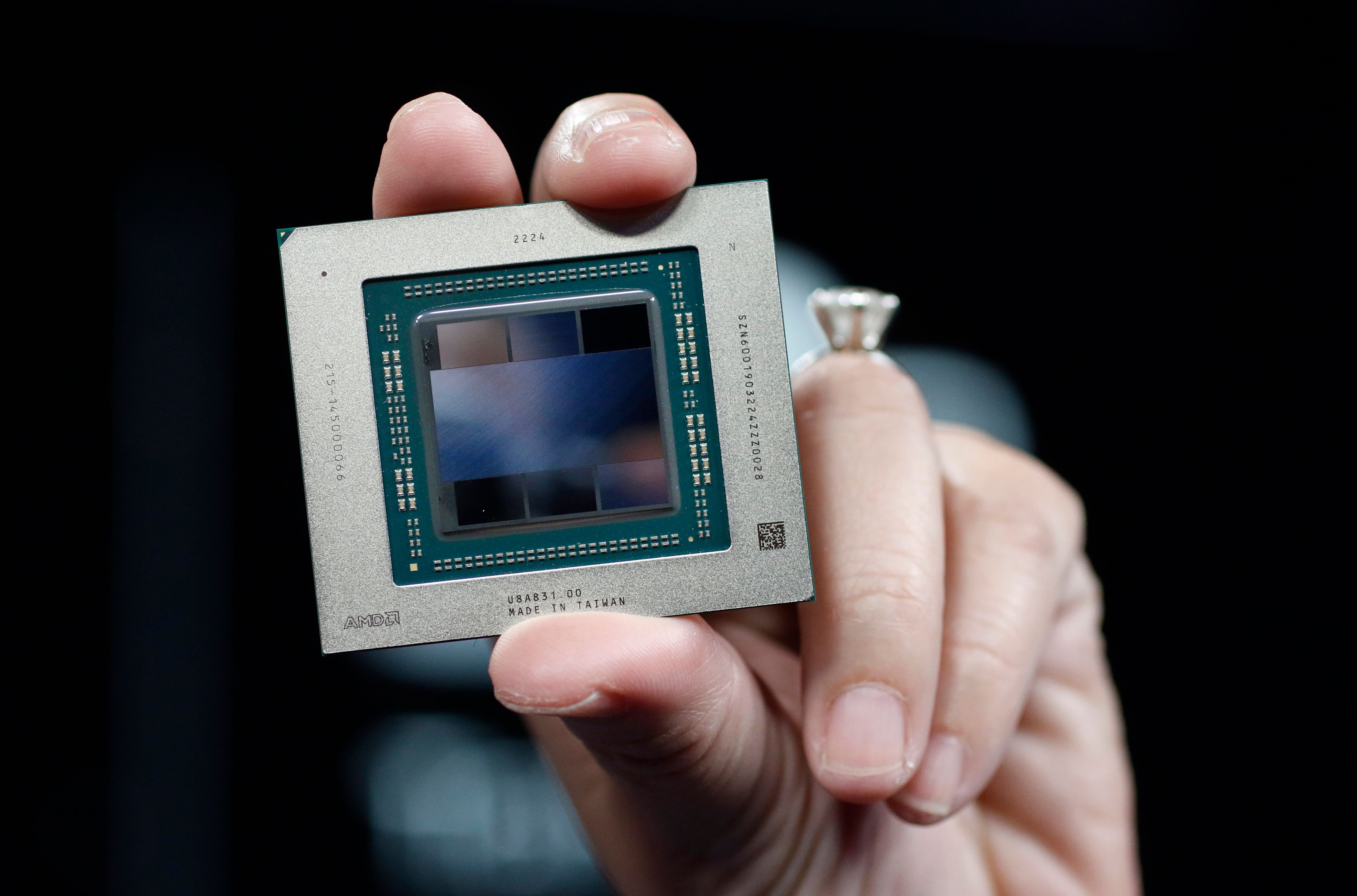
Related
Can you upgrade a laptop graphics card (GPU)?
Can you make a graphics switch in your favorite laptop? Here’s what you need to know.
Behind the curve on display technology
Very fast, but don’t expect any HDR
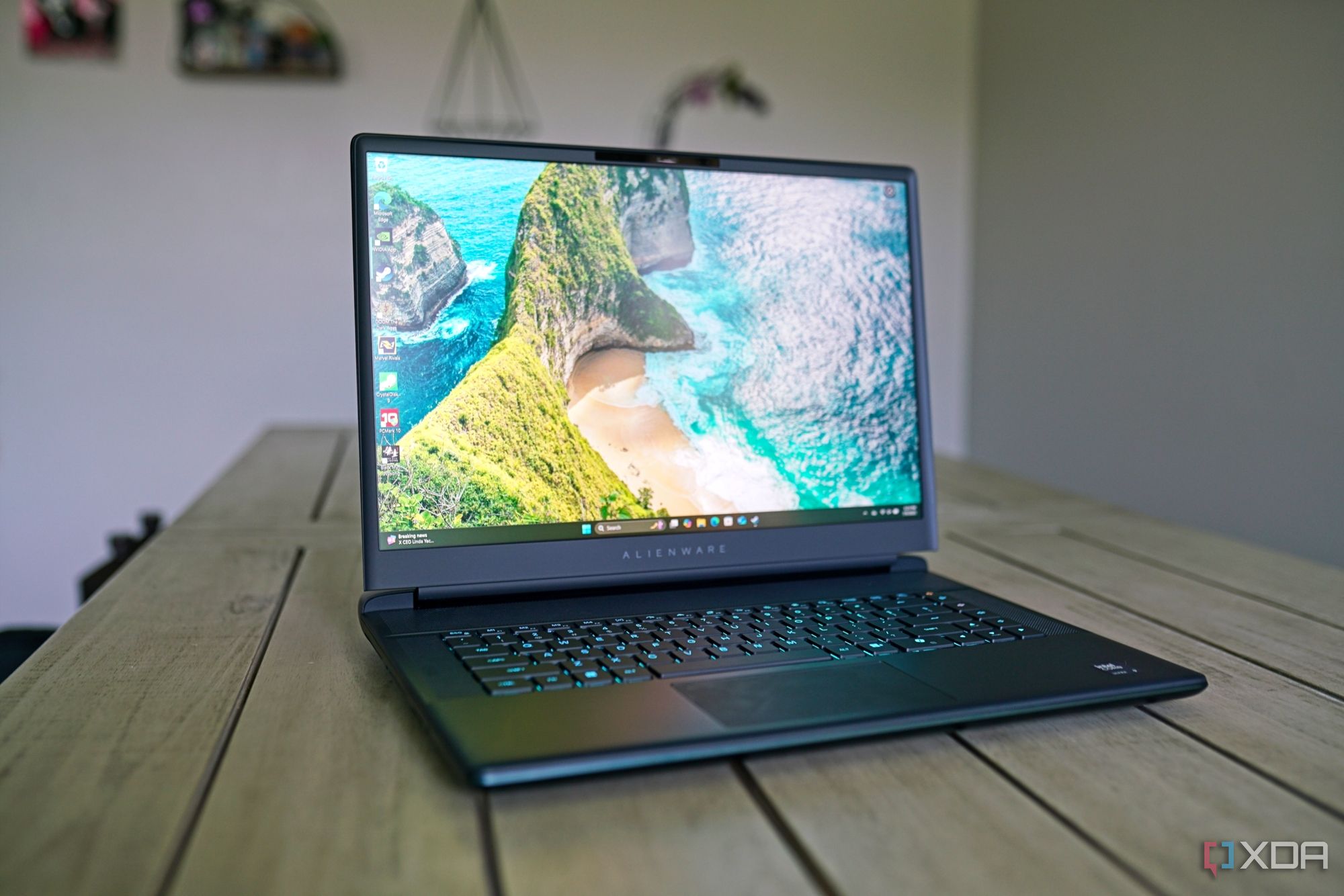
The display is easily the most disappointing aspect of the 16 Area-51. It’s using a bog-standard IPS panel that can’t reach above 500 nits on peak highlights and lacks the requisite contrast for HDR. This was the standard for gaming laptops a few years ago, but that’s quickly changed. OLED and mini-LED panels are widely available, even on this class of laptop. The Legion Pro 7i, for instance, comes with an OLED display that’s capable of matching the 240Hz refresh rate Alienware offers on the 16 Area-51.
It’s still a serviceable screen. It’s bright enough and color accurate enough to not be offensive, and it comes with features like Advanced Optimus and that 240Hz refresh rate. I was just hoping Alienware would push the display further considering this is a massive redesign of its 16-inch offering. This is the highest-end laptop that Alienware offers, outside the 18 Area-51. If there’s anywhere to go all-out with OLED or mini-LED, it’s here.
The keyboard and trackpad aren’t great
Serviceable, but not my favorite
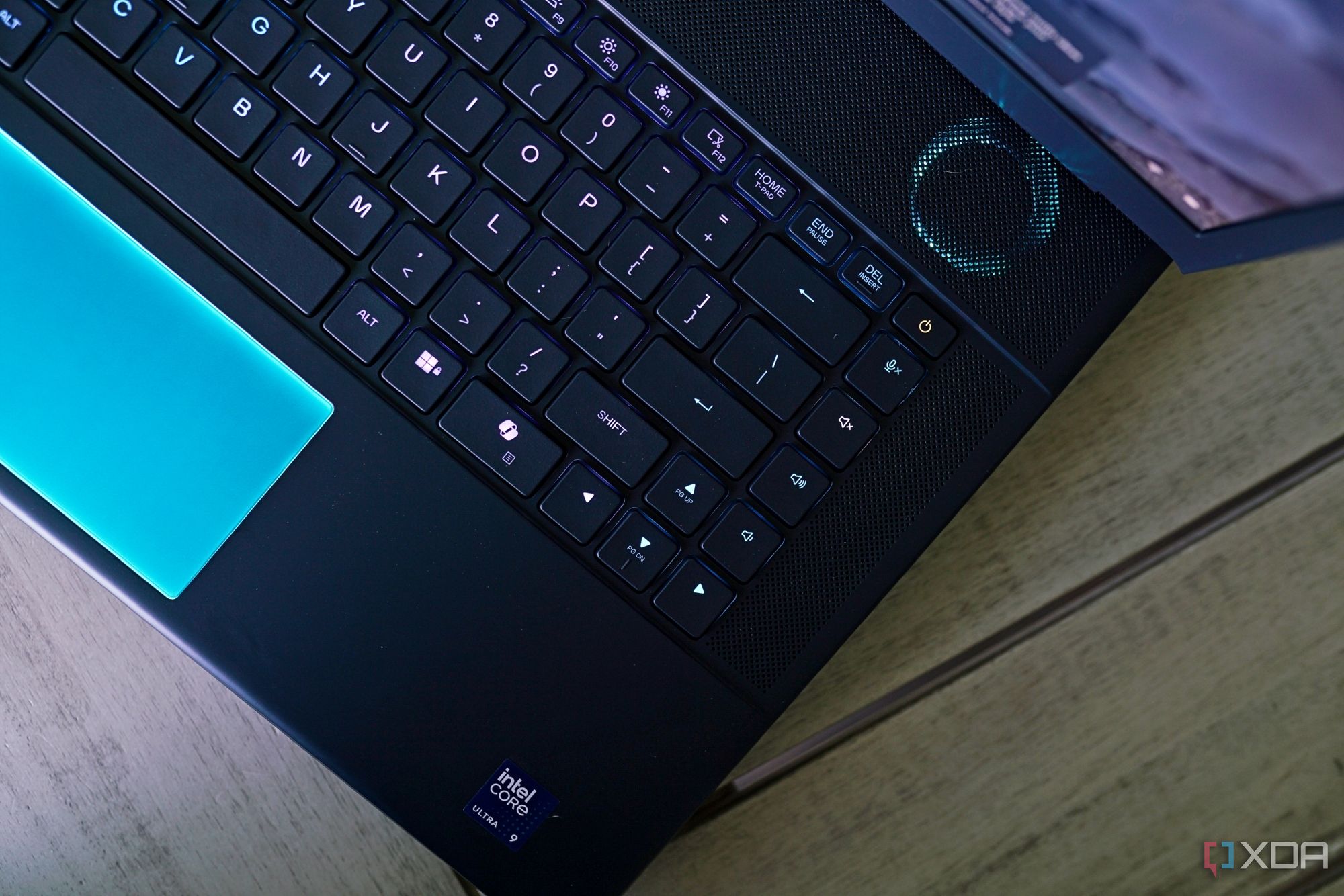
As mentioned, Alienware pushes the keyboard and trackpad toward the bottom edge of the Area-51 to make room for two fans near the screen. It’s a great design for keyboard comfort, as you don’t need to reach across the full device, but it leaves the trackpad feeling cramped at the bottom. The trackpad looks and performs well, but I’d prefer it larger. Maybe plan to bring along an external mouse if you’re interested in picking up the 16 Area-51.
The keyboard feels comfortable enough to type on, but it’s far from my favorite on a gaming laptop. It comes with a long travel distance, which contrasts with chiclet-style click while you’re typing. It’s not one of those atrocious “mechanical” keyboards some brands shoehorn into a laptop, but it’s also not as refined as the keyboards you’ll find on Asus ROG or Lenovo Legion laptops.
Speeding across the galaxy
With a few pitstops along the way
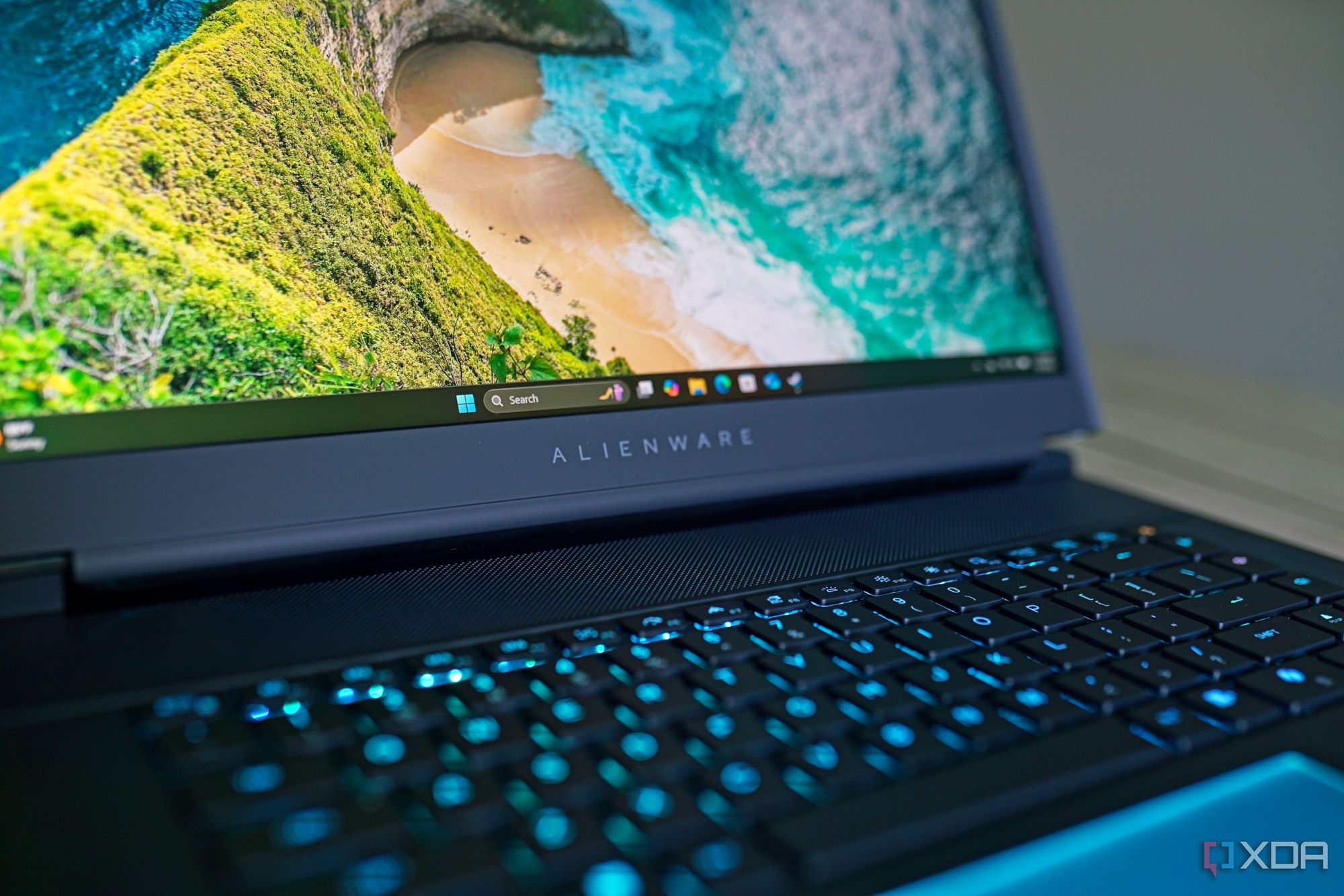
The components inside the 16 Area-51 are very capable, and the quad-fan cooling system does a good job at keeping noise (and heat) to a minimum. However, the resulting performance is just a touch short of what I’ve seen out of other gaming laptops. The Alienware 16 Area-51 isn’t far behind enough that the performance is a dealbreaker, especially if you like other aspects of the device. But if you’re looking for a gaming laptop that squeezes every last drop of performance out of the hardware inside, you’ll be disappointed by the Alienware 16 Area-51.
Before leaving the impression that the performance is bad, I want to highlight Cinebench and Geekbench. Compared to the Legion Pro 7i with the same CPU, the Alienware 16 Area-51 comes up a bit short in Cinebench, but it remains in lockstep in Geekbench 6. The story here is really how the Core Ultra 9 275HX compares to last-gen components, however, scoring massive gains in both single and multi-core performance with just a single generation.
|
Alienware 16 Area-51 (Core Ultra 9 275HX / RTX 5080) |
Lenovo Legion Pro 7i (Core Ultra 9 275HX / RTX 5080) |
Acer Predator Helios 16 (Core i9-14900HX / RTX 4080) |
Asus ROG Zephyrus G16 (Core Ultra 9 185H / RTX 4090) |
|
|---|---|---|---|---|
|
Cinebench R24 (single / multi) |
134 / 1,971 |
135 / 2,079 |
119 / 1,307 |
107 / 1,038 |
|
Geekbench 6 (single / multi) |
3,073 / 19,559 |
3,072 / 19,467 |
2,765 / 16,795 |
2,486 / 14,441 |
|
3DMark Time Spy |
21,119 |
21,368 |
12,800 |
14,305 |
|
3DMark Time Spy Extreme |
10,606 |
11,054 |
6,700 |
7,039 |
|
PCMark 10 (AC / Battery) |
8,451 / 6,070 |
N/A |
8,804 / 5,239 |
8,779 (AC) |
In a gaming-focused benchmark like Time Spy, you can see a little more clearly how the components in the Area-51 end up a hair behind an identical configuration in the Legion Pro 7i. The gaps here are small, and they don’t account for more than a few frames in real games; a difference no one will notice in this era of upscaling and frame generation tech. But it’s a gap nonetheless.
Breaking into games, the Alienware 16 Area-51 is capable of hitting above 60 fps at native resolution with maxed-out settings and no DLSS, but that shouldn’t be surprising when you’re spending north of $3,000 on a laptop. DLSS 4 and its multi-frame generation capabilities are the real draw here, especially in games with path tracing like Doom: The Dark Ages, Cyberpunk 2077, and Black Myth: Wukong. With a dash of upscaling and plenty of frame generation, you can easily saturate the 240Hz refresh rate of the Alienware 16 Area-51’s display in most games.
|
Doom: The Dark Ages (Ultra Nightmare) |
68.8 fps |
No DLSS |
|---|---|---|
|
Doom: The Dark Ages (Ultra Nightmare) |
177.5 fps |
DLSS Balanced + Frame Gen |
|
Doom: The Dark Ages (Ultra Nightmare Path Tracing) |
161.5 fps |
DLSS Balanced + 4X |
|
Cyberpunk 2077 (Ultra) |
90.6 fps |
No DLSS |
|
Cyberpunk 2077 (Ultra) |
173.63 fps |
DLSS Balanced + Frame Gen |
|
Cyberpunk 2077 (RT Overdrive) |
185.7 fps |
DLSS Performance + 4X |
|
Black Myth: Wukong (Cinematic) |
183 fps |
DLSS Quality + Frame Gen |
|
Black Myth: Wukong (Cinematic RT) |
DLSS Balanced + 4X |
|
|
Marvel Rivals (Epic) |
65 fps |
No DLSS |
|
Marvel Rivals (Epic) |
157 fps |
DLSS Balanced + Frame Gen |
Still, I’ve tested several laptops with identical components, and the Alienware 16 Area-51 ends up a few frames behind devices like the Legion Pro 7i and ROG Strix G18. We’re dealing with thin margins here, but it seems to me that Alienware kept things relatively conservative on the 16 Area-51 to keep temperature and noise at bay. Thankfully, you have some options in the Alienware Command Center to push the components further and make up the gap, though at the cost of increased temperatures and noise.
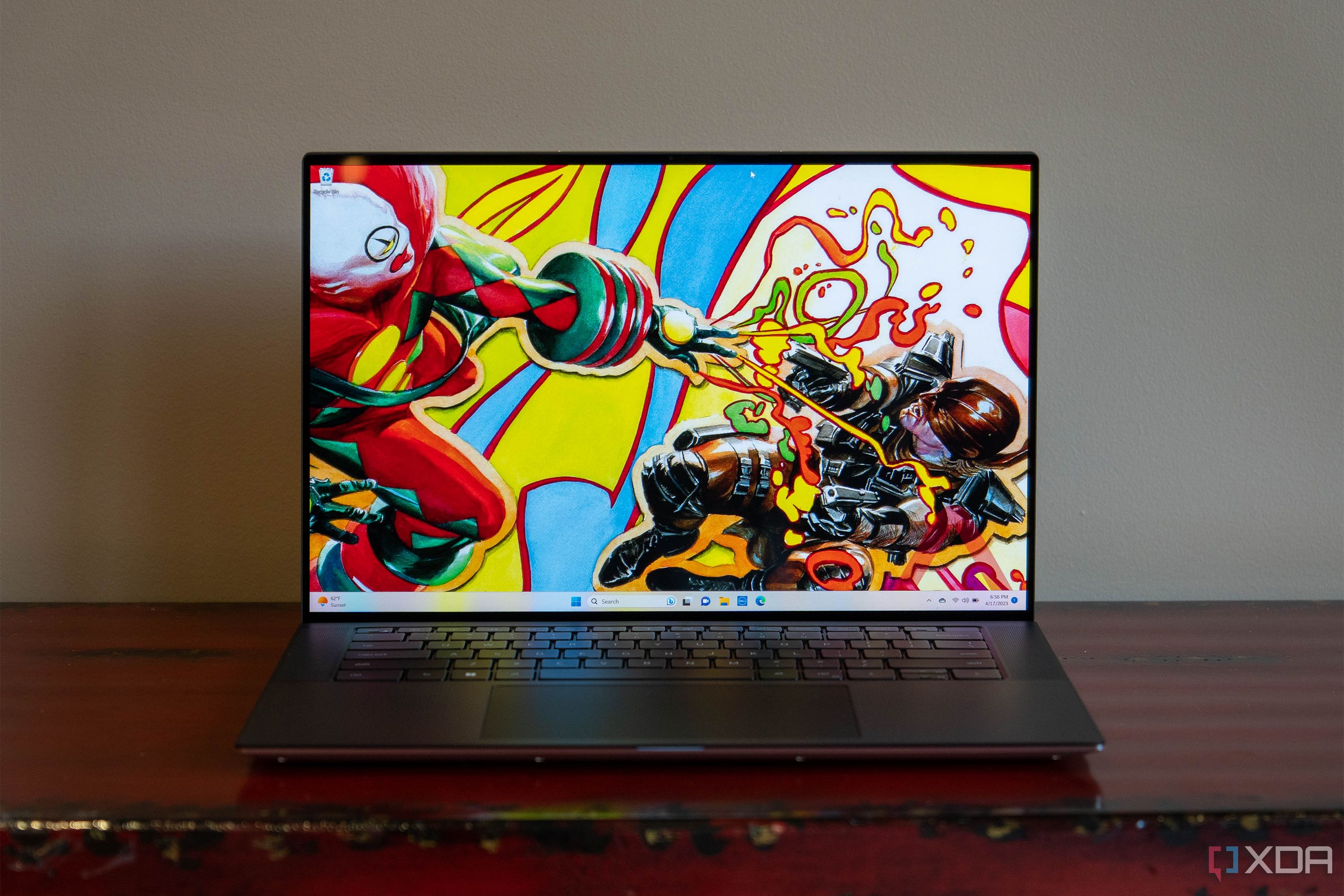
Related
Best upgradeable laptops in 2025
Take a look at these great laptops that you can upgrade yourself after purchase
Should you buy the Alienware 16 Area-51?
You should buy the Alienware 16 Area-51 if:
- You want a wholly unique gaming laptop.
- You don’t plan on traveling much.
- You can pick it up on one of Dell’s frequent sales.
You should NOT buy the Alienware 16 Area-51 if:
- You want peak performance out of the box.
- You want to upgrade to an OLED or mini-LED display.
- You need something that won’t stand out like a sore thumb in a coffee shop.
Despite some earned criticism, I can’t help but love the Alienware 16 Area-51. It’s not a perfect laptop by any means, with a disappointing display, so-so keyboard, and performance just a touch behind the competition. But it’s also a laptop that swings big in a way few devices do, and it manages success in the process. This isn’t the right laptop for all or even most buyers, but if you’ve been caught up in the allure of Alienware trying something different, you won’t be disappointed with the 16 Area-51.

Alienware 16 Area-51
- Operating System
- Windows 11 Home
- CPU
- Intel Core Ultra 9 275HX
- GPU
- Nvidia GeForce RTX 5080
- RAM
- 32GB DDR5-6400
The Alienware 16 Area-51 feels bold in a way few gaming laptops do these days, even if its interstellar ambition falls short in some cases.
